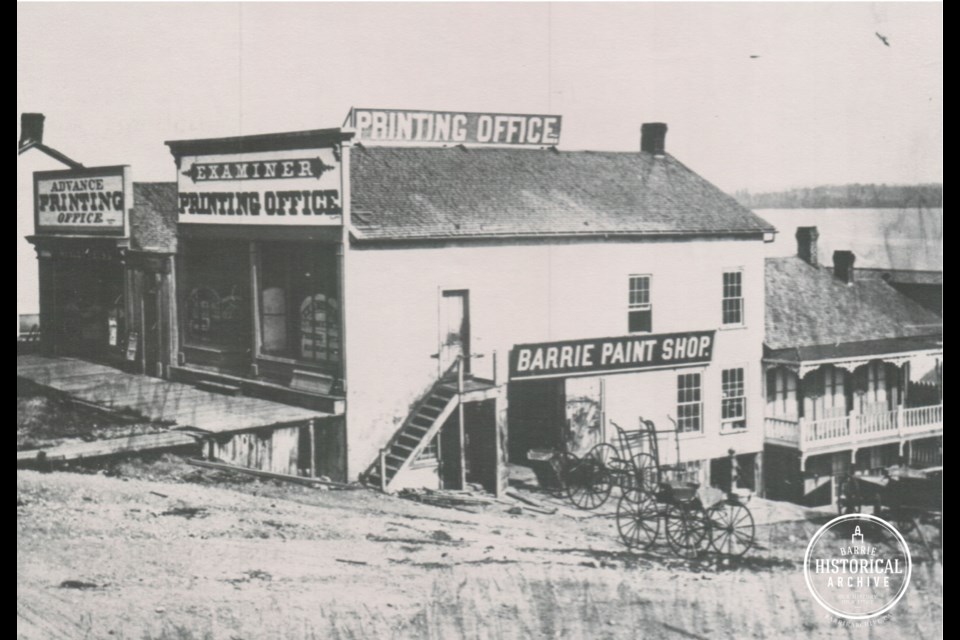Fred Grant, the legendary keeper of our local history, eloquently captured the true value of what might otherwise sound like a rather utilitarian business of the past. In 1951, he described Bailey’s Livery on Dunlop Street, just east of Mulcaster Street, in one of his lengthy reminiscences in The Barrie Examiner.
“The livery stable used to have a very important place in the business life of every community; it was sort of a headquarters for transportation and a rendezvous for people who found time hanging heavily, just like the old-time country store in the villages.”
Livery, this strange sounding and almost forgotten word, comes from the same Anglo-French root that created the word delivery, which does make sense. Without the livery stables of old, and the horses and conveyances held within, nothing and nobody would be going anywhere.
Josephus Bailey was born in 1845 in Markham, Ont., and later studied at the Ontario Veterinary College in Toronto, graduating in 1870. He came to Barrie to purchase the established veterinary business of Dr. D.G. Sutherland. Later, he decided to combine his practice with a livery trade and began to build up a good business near Carley’s boat works.
“That livery stable was certainly a great community centre in more than one respect, where you could always sit in on a card game of some kind, either in ‘the office’ or upstairs in the hayloft, financed at a cent a corner by the coterie of hangers-on, with a big good-natured dog snoozing in the doorway and sometimes a billy goat running loose around the premises.”
Of course, the real work going on within the livery was the care and hiring of horses and the letting of various types of wagons and buggies.
It’s hard to imagine now the part that the horse once played in Barrie. A survey done in 1893, by sanitary inspector Robert King Jr., listed the number of horses which could be accommodated at the various hotel and livery stables around town. Bailey’s Livery had room for 10 horses, but, amazingly, the Mansion House could keep 50, the Wellington 60 and the Victoria a startling 100 horses.
The inspector was concerned with the amount of manure produced by these great numbers.
Mr. Grant also spoke of his fond memories of playing lacrosse in his youth and how away games necessitated the hiring of Doc Bailey’s biggest rig, a 25-foot trap pulled by two teams of horses. Each player had to scrounge for the 25-cent fee to ride, otherwise he would be left behind.
Grant mentioned, with some glee, the inevitable teasing that young fellows got when they arrived to book a horse and buggy to take a girl out for a ride. He added that there was always a mad dash to hire some kind of conveyance if a dance or wedding was announced for an out-of-town location.
When, in 1901, Barrie got its first ambulance, it was stored at Bailey’s and was free for any resident to use with only the cost of hiring a horse to pull it charged. The vehicle had been financed by Commander Whish, and after researching what Toronto hospitals were then using, built by carriage maker Emile Sevigny.
In true small-town tradition, if a customer hired a horse and carriage and paid the fee, promising to return them on time, no further questions were asked. On more than one occasion, Doc Bailey was forced to go looking for his possessions which were sometimes simply abandoned on a roadside in another town but, very likely, his livery stable continued on in its usual fashion.
Just as Fred Grant remembered.
Each week, the Barrie Historical Archive provides BarrieToday readers with a glimpse of the city’s past. This unique column features photos and stories from years gone by and is sure to appeal to the historian in each of us.



